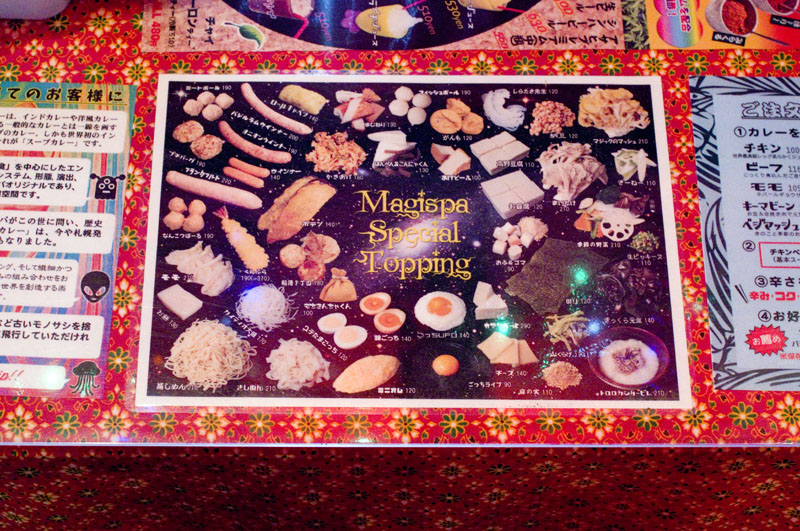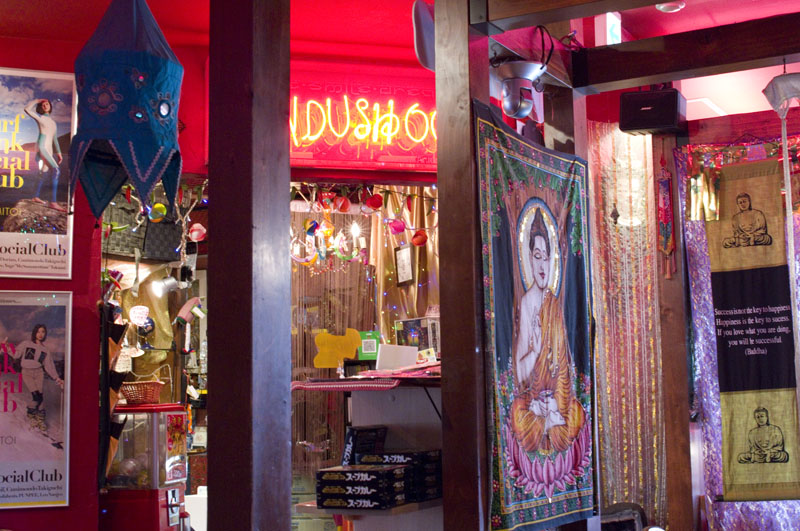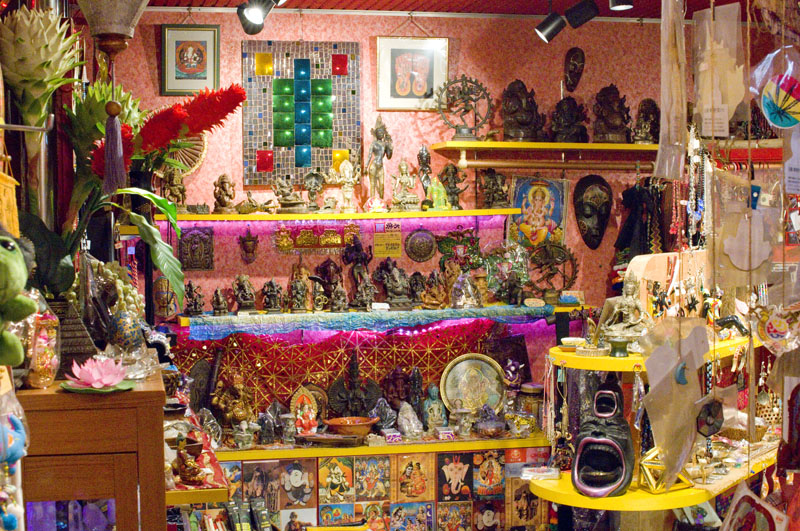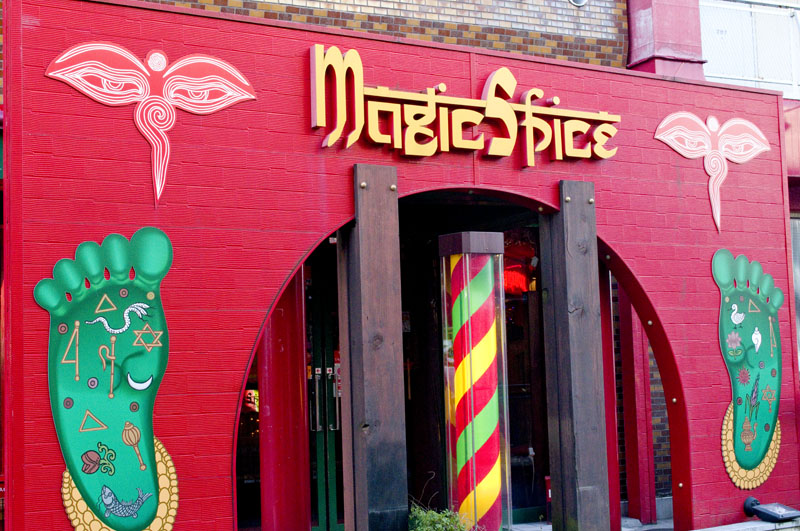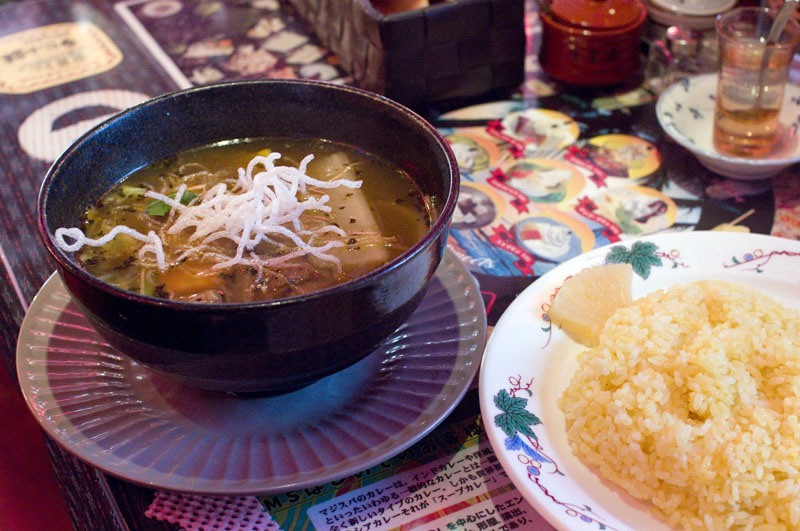
The main Sapporo branch of Magic Spice first coined the term "soup curry" in 1994, so the shop has played an important part of the history of this dish. The riotously colorful interior is decked out in over-the-top Indian decor and quasi-religious imagery, and there's even a mini gift shop in one corner selling Indian spices and random bits of exotica. This seems to be one of those restaurants where the unique atmosphere is just as big a draw as the food.
Magic Spice currently offers ten different soup-curry varieties, including a few unusual ones like Nepalese momo dumplings and keema-bean. After you've decided on your main ingredients you can specify either a chicken- or tomato-based soup. Next, there are seven levels of spiciness to choose from, and a bewildering variety of forty optional toppings such as meatballs and fish dumplings. Many of the toppings are reminiscent of oden ingredients.
We found the default chicken-based soup, said to be based on Indonesian soto ayam, to be fairly ordinary, like sipping a meaty consomme that's had some extra spices thrown in. The soup contains a dozen or so vegetables, but unlike many modern soup-curry shops the vegetable portions here are minuscule - a thin slice of eggplant here, a single mushroom there, a couple of snow peas. Our main ingredient, pork kakuni, was also pretty run-of-the-mill.
If you're in a cafe-lounging mood, the menu offers a page full of desserts, lassi variations and other sweet drinks, as well as alcoholic beverages like sangria and "Dream Lassi" cocktails. Soup curries are priced from around Y1100, and take-out service is available. The multiple dining rooms are fairly spacious, but nonetheless there are lines on weekends, so plan accordingly.





